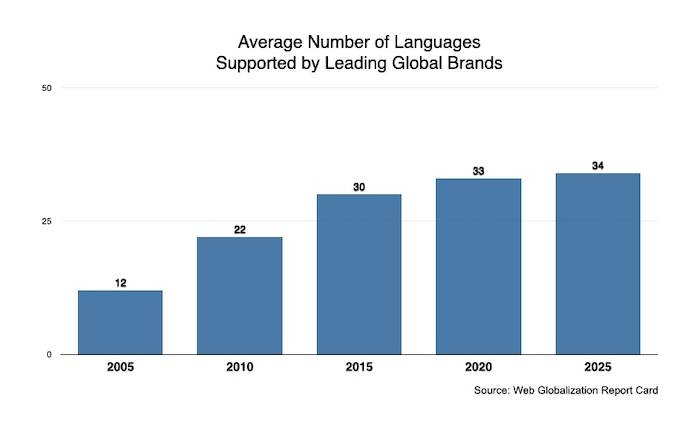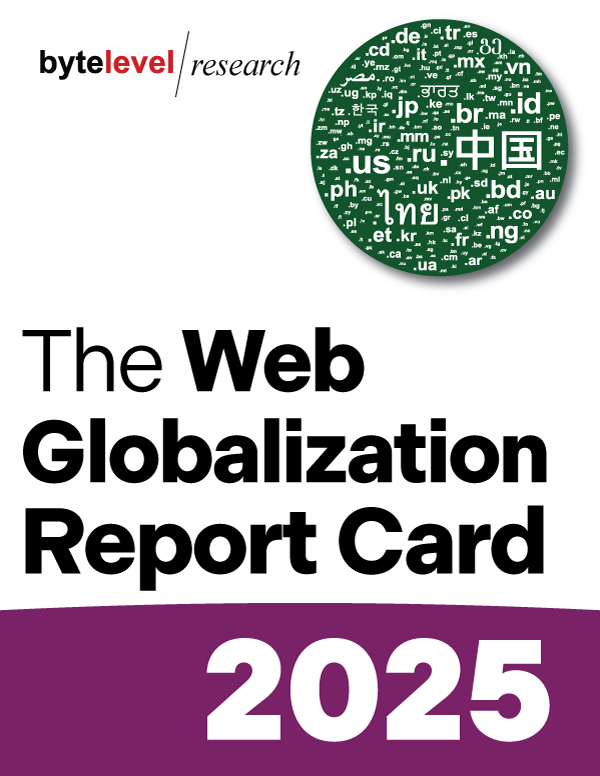This is the 21st year of the Web Globalization Report Card.
The more things change, the more things stay the same.
Such as Wikipedia emerging on top, with support for more than 300 languages and a fast-loading, globally consistent design.
And Airbnb, which finished in second place yet again — though not for remaining the same. The website continues to expand its linguistic reach but, most important, has pioneered AI-powered self-translation. In other words, customers and visitors can opt-in to automatically translated content as they browse the website (an experience many other websites would be wise to emulate).
And Bosch, coming in at number three, illustrates how a diversified global brand can balance global consistency with local flexibility across its many product lines.
Here are the top 25 websites overall:
- Wikipedia
- Airbnb
- Bosch
- IKEA
- Nestlé
- Pfizer
- Coca-Cola
- Philips
- Spotify
- Adobe
- DHL
- Visa
- Volvo Cars
- American Express
- Uber
- Tripadvisor
- Canon
- LG
- Apple
- Microsoft
- 3M
- Merck (MSD)
- Sanofi
- LDS.org
As a group, these 25 websites support an average of 65 languages.
This is quite a bit higher than the average for all 150 global websites studied, which is 34, seen here:

How websites were chosen
One does not make it into the top 25 based purely on languages. To be considered one of the best global websites, it must excel across four key areas:
- Global Reach (Languages): The internet connects computers, but it is language that connects people. To achieve a perfect score in this category, a website must support 50 or more languages, not counting US English.
- Global Navigation: If a web user cannot find his or her localized website, the site may as well not exist. That’s why global navigation (the “global gateway”) is so important.
- Global/Mobile Architecture: A website design should be globally consistent yet flexible enough to allow for local content and functionality. In addition, the design must adapt to mobile devices and usage scenarios. Global consistency provides users with a credible brand and experience as they navigate between the .com and local sites, and also allows for more efficient management. In addition to global consistency, the site must also be built so that users on mobile devices have a similar (or better) experience. The website should also be optimized for viewing on mobile devices, such as via responsive design. A mobile app is not required; however, if an app is available, it should provide language parity with the desktop website.
- Localization & Social: Content should be localized for the user’s culture, country, and community. A website may not translate all content for users across all sites (few companies go this far), but a website should translate enough content for users to have a positive experience. In other words, does the user find enough content in his or her language to fully understand a product or service, to complete a sale, or contact customer support? In addition, are visuals localized, including the use of local models? And social platforms should be supported in the user’s language and made prominent via the local websites. Finally, I do look for signs of websites using automatic translation to allow visitors to “unlock” content as needed instead of leaving the content untranslated (see Airbnb).
I’ll have more to share in the weeks ahead about the website leaders and emerging trends (including, yes, AI).

Click here to learn more about the 2024 Web Globalization Report Card.

